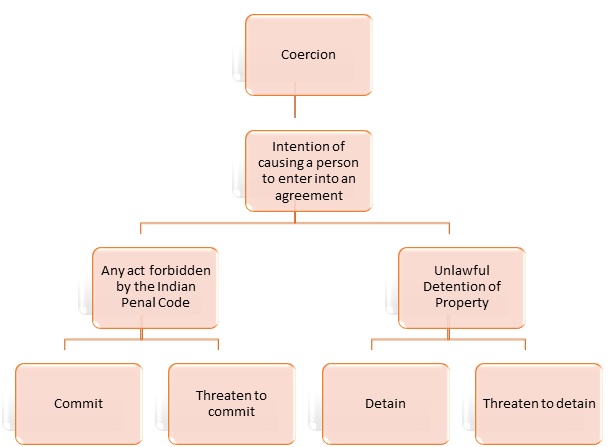A Primer on Sedition Law in India-Part 2
In our previous article ‘A Primer on
Sedition Law in India-Part 1’, we discussed the meaning and history of sedition
law in India. While there have been various interpretations of sedition since
it has been included as an offence under the Indian Penal Code, there are
several ambiguous grounds on which a person is charged with sedition in modern
times. As interpreted by the courts in recent times, the act is sedition when
it incites violence or hatred for the country or the government representing
the state. The dynamics of the sedition and its enforcement have been discussed
by numerous law commission reports and judicial pronouncements but yet the law
remains to be the same as it was 150 years ago.
In the present times, sedition is being used as a tool to threaten people to not criticize the actions of the government. Scholars claim that the monarchical rule of government is being established with the use of Section 124A of the IPC where liking an anti-governmental post, following any anti-government organization, criticizing the government for wrongful actions, or even protesting for the protection of your rights have become illegal. Political officials are hunting down people who say anything against it or in favour of their enemies. An illustration of this is when Divya Spandana, a well-known actor and politician praised Pakistan for treating her warmly and stated that it was ‘not hell’ when she visited the country for a vacation, she was charged with sedition for being appreciative about the people of the neighbouring state which happens to be the ‘enemy’ of India.[1]
Recent Cases of Sedition Law
Supreme court in its judgments on
numerous occasions have clearly opined that only words are not enough to commit
sedition, the incitement/excitement of violence is an important factor and
should not be overlooked by limiting the scope of the law of sedition.[2] This was reiterated in the
cases of Kashmir Singh & Ors v. State of Punjab (2009)[3], Gurjatinder Pal Singh v.
State of Punjab (2009)[4], and Simranjit Singh Mann
v. State of Punjab[5].
Despite repeated judicial pronouncements the government refuses to recognize
these precedents and has been continuing with the same irrational and arbitrary
interpretation of the law. There have been various instances where
students and professionals have been arrested and charged for sedition
infringing their fundamental right of freedom of speech and expression. One
such disturbing example is the arrest of an astounding number of 23,000 people
who protested against a nuclear power plant in Tamil Nadu in 2012 – 2013 and
were held for "waging war against the state" and sedition.[6] Among them, 9000 were
charged with sedition alone. The Tamil Nadu Police didn’t even notify the
correct number stating only 2000 people were arrested.[7]
Similarly, in 2014, 60 Kashmiri
students were charged with sedition for supporting Pakistan during a cricket
match.[8] The authorities were made
to drop the charges due to lack of evidence to support sedition.[9] Other recent cases
where government misused this law of sedition was when more than 3000 people
were arrested for sedition as they protested against the CAA (Citizenship
Amendment Act) implemented by the Government of India.[10] The requirement of
incitement to violence laid down by the Supreme Court in various cases like
Kedar Nath Singh vs State of Bihar[11] was very conveniently
ignored by the government. It is undeniably specified by the courts that only
inciting violence or creating public disorder would amount to sedition. The
supreme court reaffirmed these principles in the case of Common Cause &
Another v. Union of India[12] in 2016. It is not
claimed here that all the arrests were not related to sedition, however where
violence or public disorder was not created or intended should have been
exempted by the police.
In Tamil Nadu, a singer, S. Kovan, who
criticised the government for allegedly profiting from state-owned liquor shops
at the expense of the poor[13] and student leader
Kanhaiya Kumar who was arrested for shouting anti-national slogans (later bailed)
are some other instances where sedition was charged without any incitement of
violence.[14]
Disrespecting National Anthem - Sedition?
In 2014, 7 young men in Kerala were
arrested for sedition for disrespecting the country as they refused to stand up
for the national anthem in a cinema.[15] The debate regarding
whether not standing for the national anthem constitutes disrespecting it is
still active. It was settled in the judgment of Bijoe Emmanuel v State of
Kerala[16], as the court asserted
that proper respect is shown by standing during the national anthem, however
not standing for the same will not constitute disrespect towards the country
and cannot incite violence. Although the order by MHA in 2018, which states
that it is mandatory to stand during the national anthem has reinstated the dilemma
of whether not standing for the national anthem should be regarded as sedition.[17]
NCRB Data
As the data
demonstrates, the number of people who are charged for sedition has
persistently increased from 35 in 2016 to 70 in 2018 and to more than 100 cases
this year.[18]
The NCRB data shows that in 2018, the then state of Jammu & Kashmir saw a great
increase in the sedition cases, with 12 cases in 2018 from just one case in 2017.
Jharkhand was the state with most of the sedition cases while Assam was the
state with the highest number of offenders with 27 offenders in 17 sedition
cases.[19] Moreover,
Kerala (9 sedition cases) and Manipur (4 sedition cases) are the other states
in the top five list.[20] The
conviction rate of such cases indicates that the literal interpretation of
sedition that the Government follows is wrong. The chart below gives a clear
idea of how the political officials are misusing their power and the ambiguous
language of the section by charging people arbitrarily for sedition. These
charges are ultimately proved to be false charges which are imposed by the
political officials (ultimately the government) to establish authority over the
people much like what the British intended to do which has led people to
contemplate whether they should fear the current government.
 |
| Source-Livemint |
Conclusion
Indian sedition laws were passed by the
British who were keen to suppress the rage of the public who wanted to fight
for their country against the dominant and exploitative rulers. The
colonial-era ended 73 years ago yet we are still following the same irrational
unamended law, enacted by the British raj which infringes the rights of the
public. Even after several judgments, interpretations, protests, Law
Commissions' suggestions, private members' bills to amend the law, the
government has not updated the law with time, henceforth, escorting the Indians
to live in the same era of colonial dominance as British Governance, only this
time the Indian Government is the perpetrator. Disregarding judicial
pronouncements is not just an illegal act committed by the government but is
also a conspiracy to dilute the checks and balances approach established by
separation of powers principle, with the legislature overriding the judiciary.
After analysing the law related to
sedition, judicial decisions and the present scenario, the main question that
arises is: By not amending such a law which was enforced for dominating
and suppressing the people of India, what does the government want to depict
- its dominance or its monarchical danger?
By,
LawVastutah
[1] Congress's
Divya Spandana Booked for Sedition for Tweet Calling Narendra Modi 'Chor', The Wire, 26/SEP/2018, https://thewire.in/rights/congresss-divya-sapandana-booked-for-sedition-for-tweet-calling-narendra-modi-chor
[2] Balwant
Singh and others v. State of Punjab AIR 1995 SC 1785.
[3] 1977 AIR 2147
[4] 2009(3) RCR(Criminal) 224
[5] 2008 (1) R. C. R (Criminal) 588
[6] Arun
Janardhanan, 8,856 ‘enemies of state’: An entire village in Tamil Nadu lives
under shadow of sedition, The Indian Express, September 12, 2016 7:02:34 am, https://indianexpress.com/article/india/india-news-india/kudankulam-nuclear-plant-protest-sedition-supreme-court-of-india-section-124a-3024655/
[7] Ibid.
[8] Kashmiri
students booked for sedition for cheering Pakistan team, The Economics Times, Mar
06, 2014, 06:12 PM IST, https://economictimes.indiatimes.com/news/politics-and-nation/kashmiri-students-booked-for-sedition-for-cheering-pakistan-team/articleshow/31544801.cms?from=mdr
[9] Meerut
police drop sedition charges against Kashmiri students, Livemint, 07 Mar 2014,
12:33 PM IST, https://www.livemint.com/
[10] Jharkhand
Govt Drops Sedition Charges Against 3,000 CAA Protesters, The Quint, 09 Jan
2020, 08:01 AM IST, https://www.thequint.com/news/india/jharkhand-govt-drops-sedition-charges-against-3000-citizenship-amendment-act-protesters
; Congress protests ‘misuse of police’ in State, FEBRUARY 15, 2020 23:41 IST, https://www.thehindu.com/news/national/karnataka/congress-protests-misuse-of-police-in-state/article30831899.ece
[11] 1962
AIR 955
[12] (2016)
15 SCC 269
[13] Folk
singer arrested on sedition charge, Frontline, November 27, 2015, https://frontline.thehindu.com/the-nation/folk-singer-arrested-on-sedition-charge/article7866083.ece
[14] JNU
row: What is the outrage all about?, The Hindu, 18 October 2016, 13:11 IST https://www.thehindu.com/specials/in-depth/JNU-row-What-is-the-outrage-all-about/article14479799.ece
[15] Soutik
Biswas, Why India needs to get rid of its sedition law, BBC News, 29
August 2016, https://www.bbc.com/news/world-asia-india-37182206
[16] 1987
AIR 748
[17] ORDERS
RELATING TO THE NATIONAL ANTHEM OF INDIA, Ministry of Home Affairs, Government
of India, https://www.mha.gov.in/sites/default/files/NationalAnthem(E)_2.pdf
[18]
Crime in India, Statistics 2018, National Crime Records Bureau (Ministry of
Home Affairs), https://ncrb.gov.in/sites/default/files/Crime%20in%20India%202018%20-%20Volume%201.pdf
[19] Ibid
[20] Ibid



Comments
Post a Comment